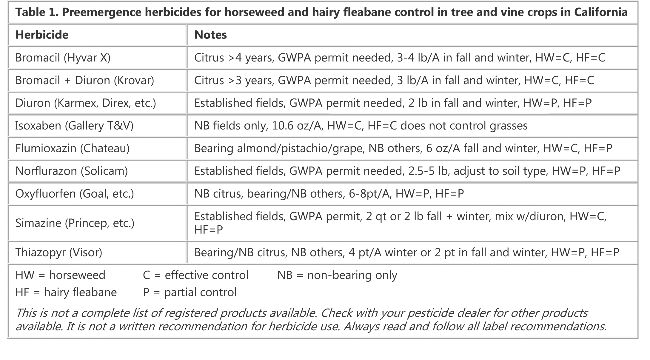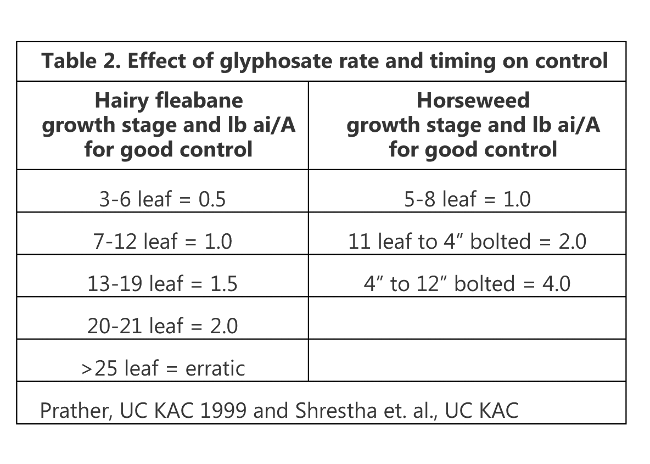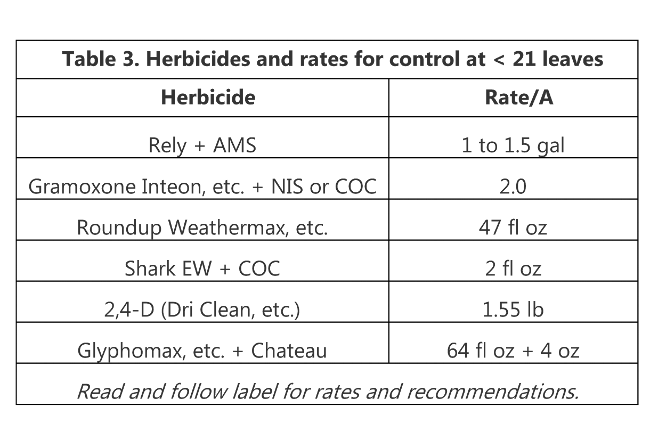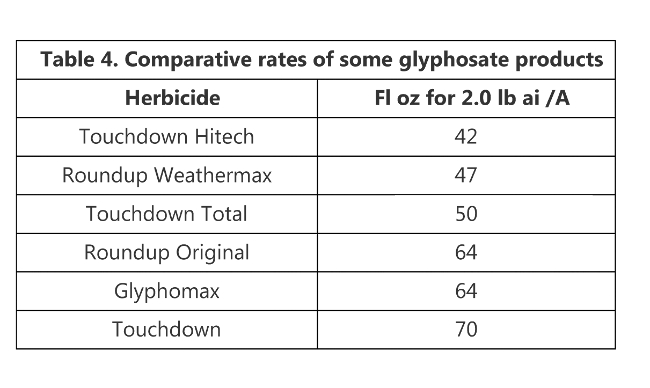While both horseweed and hairy fleabane have been here since farming began in the region, it's only since about 2003 that they have become such an obvious problem, particularly in tree and vine systems and non-crop areas.


To get these weeds back under control, it is important that growers, managers of non-crop areas, and other land owners all do their part to help resolve the issue. Regardless of control tactics used, preventing new seed production is a must to be successful. It is also critical to understand what we're dealing with when it comes to timing management efforts.
Although considered summer annuals, they have also been seen emerging in early October in the southern San Joaquin Valley (see Figure). During this time, they appear to go through an over-wintering or “survival” stage, where root growth seems more important than leaf production. So, by the time spring emergence occurs in mid-February, plants that actually emerged several months earlier may only appear to look the same as those that just emerged. This may help explain why some late-winter or early-spring applications of postemergence herbicides are not as effective.
Relying only on postemergence products can make horseweed and hairy fleabane very problematic. Consider including effective soil-residual herbicides (Table 1) where possible. Once under control, apply treatments every 2nd or 3rd year to maintain their control. Also consider making split-applications in Oct/Nov and again in Jan/Feb if you have seen them emerge during these periods in your specific area. If you farm in a groundwater protection area (GWPA), you will have to get a permit to use some of these products (refer to your county agricultural commissioner for local GWPA regulations). It is important to know, that while most of the effective materials on these weeds fall under GWPA regulations, they can still be used in many cases and should be considered.
Sensitivity to postemergence herbicides decreases the older horseweed and hairy fleabane get. Use higher label rates of effective materials (Table 2), proper coverage, and treat when they have to treating too late and/or using too low a rate (Table 3).
Also consider using spray additives (citric acid, ammonium sulfate, spreaders, etc.), if allowed on the label, to improve activity. Tank-mixing various postemergence products can also work well (i.e. glyphosate at 2 lb ai/A plus 2,4-D at 1.5 lb ai/A or Chateau at 2-4 oz/A) are effective treatments. There are numerous products sold in California that contain glyphosate, but they do not all contain the same amount of active ingredient. Read the label carefully to make sure you are using the correct amount of product that will give you a rate of at least 2.0 lb ai/acre (Table 4). If you are using recommended label doses and herbicide timing and are using properly calibrated and operating spray equipment and you still have some of these weeds escaping control, contact your local farm advisor and chemical representative to make sure you do not have an herbicide-resistant biotype. If it is determined that you do, you will need to make changes to your weed management program as soon as possible to eradicate the problem.
In addition to appropriate herbicide selection and use, cultivation can also play an important role in horseweed and hairy fleabane management. Use shallow cultivation to dislodge small plants.
Managing horseweed and hairy fleabane can seem like a daunting task. However, with the proper selection and use of chemical and mechanical tools, management can be possible. One thing to keep in mind when attacking these two weeds, other weed species may also be waiting for their opportunity once you have got these out of the way. So, it's a good idea to routinely monitor your fields following each herbicide application and check for any kind of weed escape or shift in the types of weeds present.



